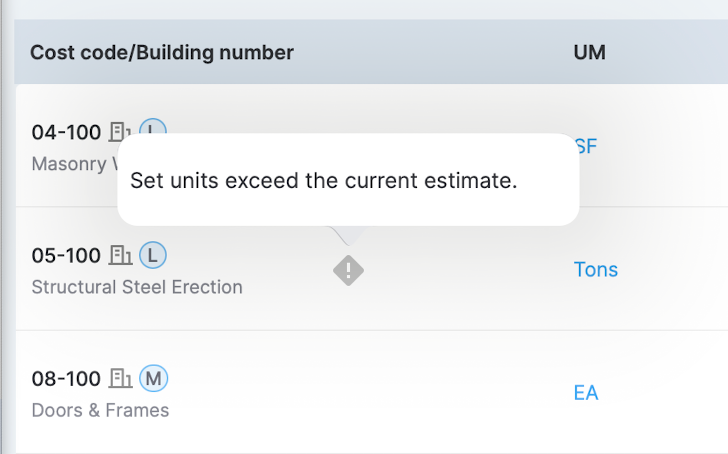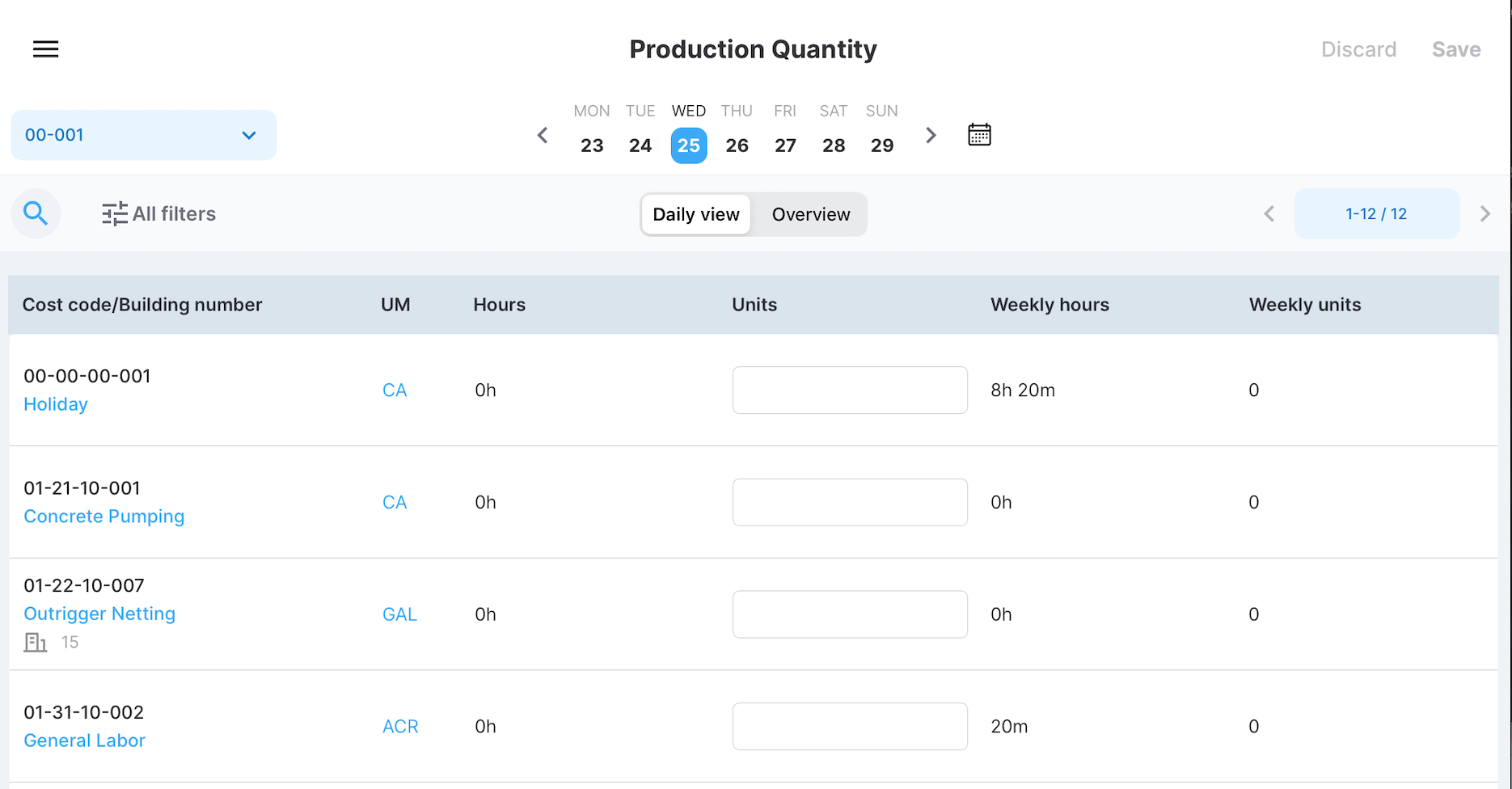Track production quantity
How to activate and track production quantity.
This article provides a step-by-step guide for enabling and tracking production quantity. To get started, you first need to enable the production quantity feature for a given job site as well as specify planned production quantity to then track the actual production quantity against it. These steps are done through the MobiClocks Web App and are described in Track production quantity under Step 1 and Step 2. After completing these two steps, you can start tracking production quantity in your Admin App, which is discussed next.
Track production quantity
Now that you have specified the planned production quantity for a cost code, you can revisit the cost code regularly to fill in the actually completed production quantity and compare it against the planned quantity and the hours that have been tracked for the cost code. To do that, you need to follow these steps:
- Navigate to the Cost Coding page of your Admin App from the left-hand sidebar and select the Production quantity tab.
PERMISSIONS
You may access the Production quantity tab if you have the View "Production Quantity" tab permission enabled for your role in Web App > Administration () > Role Permissions > Cost coding.
- Select a job site from the Job Sites navbar. Apart from job site selection, the navbar has some additional functionality which is discussed in the Job Sites navbar section in Timelogs list, as the same navbar is used there as well.
- Use the date picker to select a week.
- Apply filters (optional). You have the following filtering options:
- Hide cost codes with no weekly hours. Hides the cost codes that don't have any hours tracked during the selected week.
- Hide cost codes with no weekly units. Hides the cost codes that don't have any production quantity units added during the selected week. This is discussed in greater detail further in this guide.
Now that you have selected the cost codes that you want to track production quantity for, you are ready to fill in production quantity data. Depending on the production quantity tracking method you have selected, you'll have two different interfaces. Therefore, each case is discussed separately in the following sections.
PERMISSIONSYou may add or edit production quantity data if you have the Add/edit production quantity permission enabled for your role in Web App > Administration () > Role Permissions > Cost coding.
Method 1: Tracking production quantity weekly
In the cost codes table, you need to fill in the Weekly units field to indicate how many production quantity units have been completed for the selected cost code on the selected week.

The Weekly units field for tracking weekly production quantity
Apart from the cost code name, the cost codes table contains several other fields that provide additional information for tracking:
- UM. The measurement unit selected for the cost code.
- Estimated. What is the estimated production quantity specified under Planned PQ when setting up production quantity in the Web App.
- JTD hours. JTD stands for Job to Date and indicates the number of hours tracked for a given cost code to this date.
- JTD units. Indicates the number of production quantity units tracked for a given cost code to this date.
- Weekly hours. How many hours have been tracked on the selected week.
After entering the weekly units, select Save to apply the numbers. If the entered value exceeds Current Estimate, you will see a warning sign next to the cost code name (hover over the sign to learn the details), as shown in the following screenshot.

Estimate exceeding warning
Tracking by crew
If By Crew tracking is enabled in job site settings, the production quantity table is grouped into crews instead of individual cost codes. Tracking by crew is only available on Web App. See Tracking by crew to learn more.
Percentage-based tracking
If Percentage-based production tracking is enabled in job site settings, you can select the gear () icon and choose if you want to input production quantity in Percentage or Unit, as highlighted in the following screenshot.

Production quantity input type selection
When inputting production quantity in percentage, you are expected to indicate the percentage of the overall estimate that has been achieved in the current week. This value includes the JTD plus what has been completed in the current week.
In addition, next to the gear icon, you have another option that displays the values for both types when activated. For example, if the Percentage input type is selected and you enter a percentage value, the equivalent value in units is displayed below.
For example, in the following screenshot, the Percentage input type is selected, and the option for displaying both the unit and percentage values is enabled. A 98% value is entered under Weekly units, while Current Estimate is 50 units and JTD is 47 units. This means that to complete 98% of the estimate, 2 units must be completed in the selected week, which is displayed below the input field.

Percentage-based input example
Note that you may not enter percentage-based values if planned production quantity is not specified for the cost code. If that is the case, you will get a warning sign with details available on hover, as highlighted in the following screenshot.

Warning about the planned production quantity not being specified
Method 2: Tracking production quantity daily
Here you have two views: Daily view and Overview.
Daily view is where you fill in daily production quantity data for a cost code. Here, the cost codes table shows tracked hours for each day of the week and you can add corresponding production quantity units for each day. The Weekly column shows a sum of all the units completed on the selected week.

Daily view
Overview, in turn, provides a weekly summary of the tracked hours and units. Here, the cost codes table is similar to that in weekly tracking.
To apply your tracking numbers, select Save. You will receive warnings if the entered production value exceeds the Current Estimate. See Tracking production quantity weekly for more details.
Similar to weekly tracking, percentage-based tracking is applied if it is enabled for the job site.
Updated 6 months ago